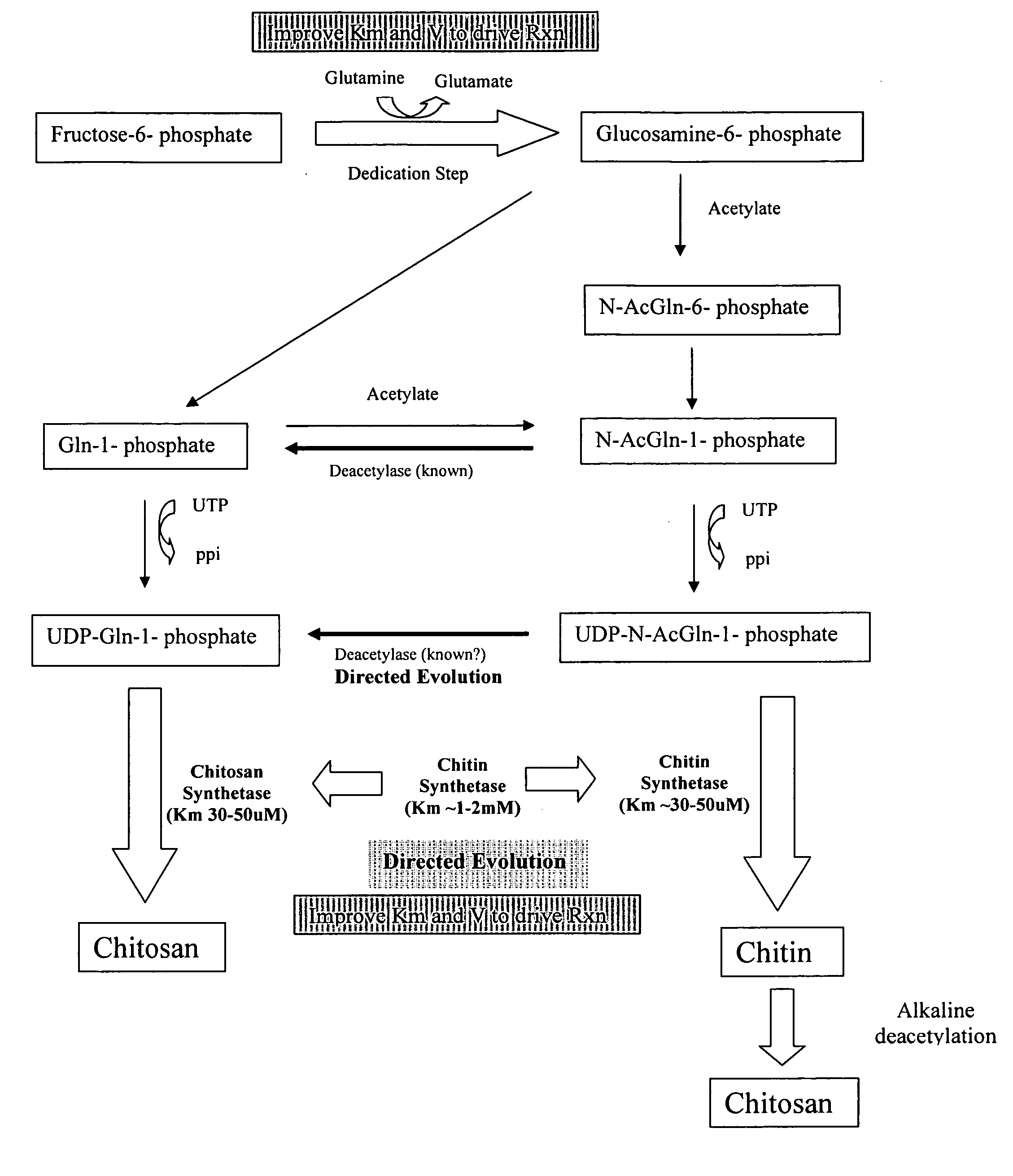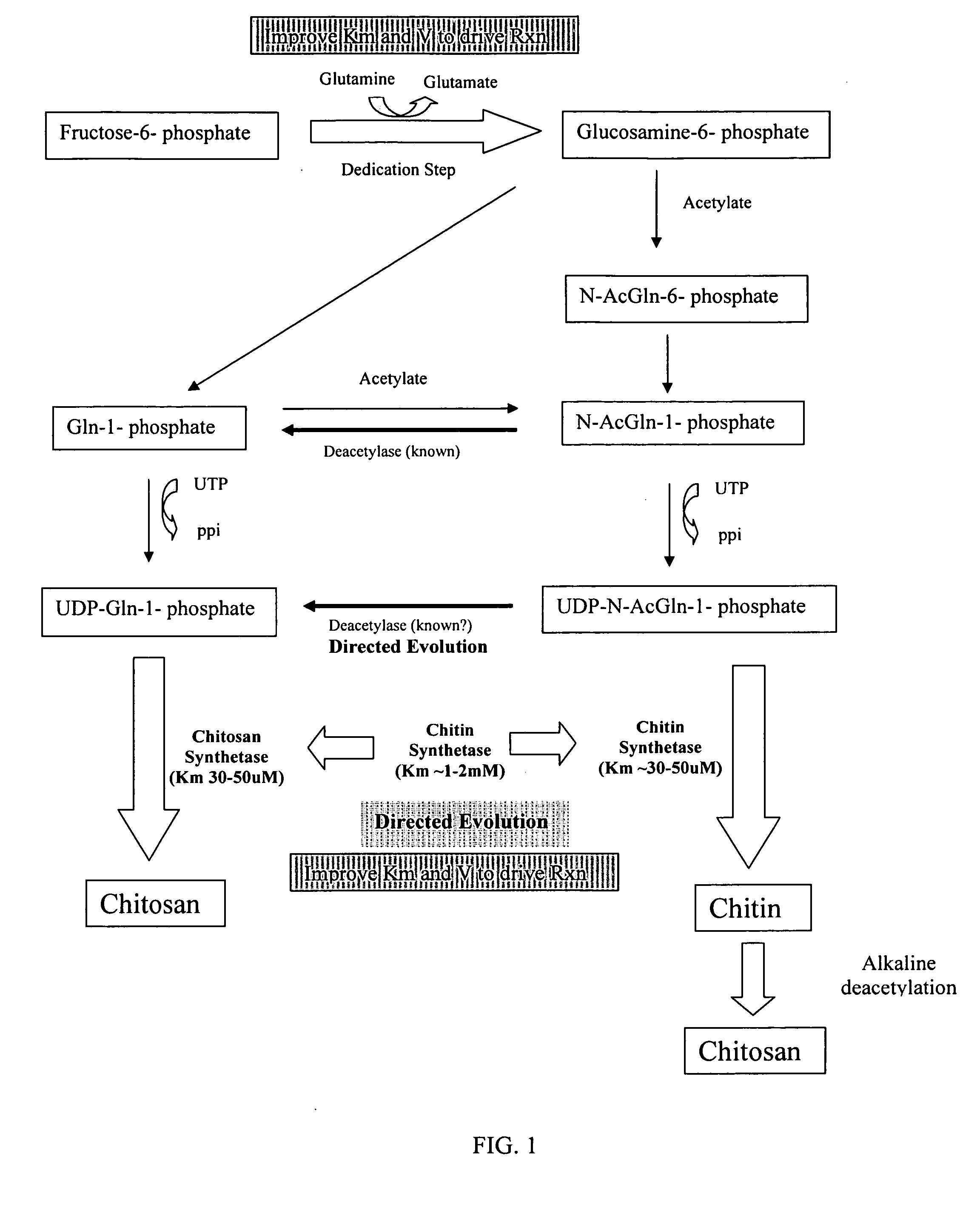Methods for production of chitin and chitosan
a technology of chitosan and production method, which is applied in the field of molecular biology, can solve the problems of high production cost, limiting the actual industrial use of chitosan, and the production capacity of many traditional production schemes, and achieves the effect of improving processivity and increasing reaction velocity
- Summary
- Abstract
- Description
- Claims
- Application Information
AI Technical Summary
Benefits of technology
Problems solved by technology
Method used
Image
Examples
Embodiment Construction
I. Overview
[0015] The present invention is directed to compositions and methods for chitin and chitosan production. The compositions are fingi, yeast, bacteria, and plants that have been genetically engineered to enhance production of particular enzyme substrates in the chitin / chitosan pathway and to increase the rate of enzyme reactions such that increased amounts of chitin and / or chitosan are produced. Methods of improving chitin and / or chitosan production comprise culturing these genetically engineered organisms under conditions suitable for expression of the chitin and / or chitosan and isolating the desired polymer. The chitin can be converted to chitosan by methods known in the art, for example, by treatment with strong alkali, or can be converted to chitosan directly in the cell by modified enzymes. These modified enzymes can include chitin deacetylase enzymes that have been modifed to improve expression or activity or both, and / or can include a chitin synthase that has been mo...
PUM
| Property | Measurement | Unit |
|---|---|---|
| temperature | aaaaa | aaaaa |
| temperature | aaaaa | aaaaa |
| pH | aaaaa | aaaaa |
Abstract
Description
Claims
Application Information
 Login to View More
Login to View More - R&D
- Intellectual Property
- Life Sciences
- Materials
- Tech Scout
- Unparalleled Data Quality
- Higher Quality Content
- 60% Fewer Hallucinations
Browse by: Latest US Patents, China's latest patents, Technical Efficacy Thesaurus, Application Domain, Technology Topic, Popular Technical Reports.
© 2025 PatSnap. All rights reserved.Legal|Privacy policy|Modern Slavery Act Transparency Statement|Sitemap|About US| Contact US: help@patsnap.com


